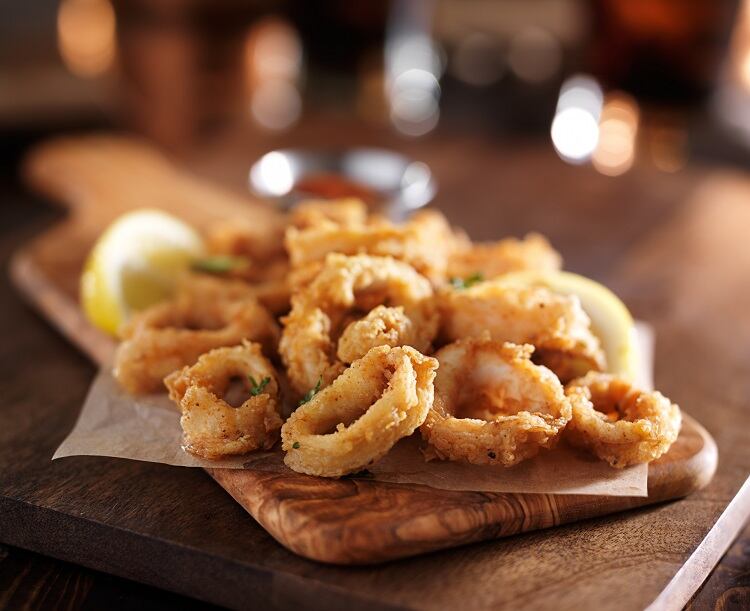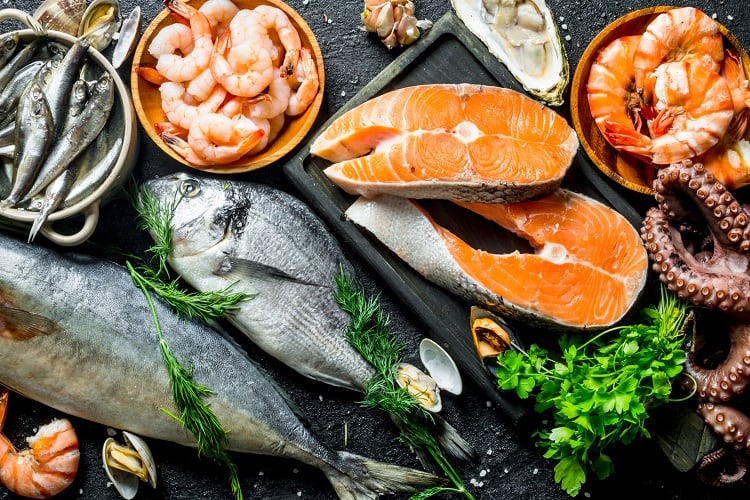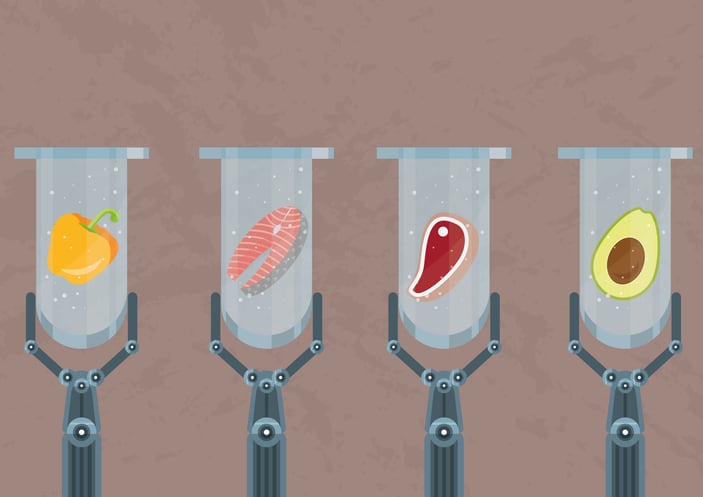While still in its nascency, the cultivated meat and seafood space is growing rapidly.
According to the Good Food Institute (GFI)’s most recent annual report, the number of players making alternative proteins from animal cells has grown by 42% to 76, and last year saw a record-breaking $350m invested in the sector.
Compared to the number of players working in cultivated meat, the alt seafood space is considerably smaller. In the US, BlueNalu and Finless Foods – which are making cell-based dolphinfish and sashimi respectively – spring to mind.
In Europe, Berlin-based Bluu Biosciences appears to be leading the charge with fish balls and paste made from fish cells.
The terminology used to describe such products varies. As it stands, seafood made in bioreactors from fish cells can be described as cell-based, lab-grown, cell-cultured, cultivated, clean, in-vitro, or slaughter-free.
While different stakeholders favour different terms, it is understood that deciding on one single term to refer to and label cell-based protein products could help settle regulatory issues, shape public perceptions, and promote a clear understanding of cell-based products.
What’s in a name?
In an effort to determine shopper preferences for such terms, in 2020 researchers at Rutgers University in New Jersey, US, tested a selection of terms with consumers.
Amongst ‘cell-based seafood’, ‘cell-cultured seafood’, ‘cultivated seafood’ and cultured seafood’, and the phases ‘produced using cellular aquaculture’ cultivated from the cells of ___’, and ‘grown directly from the cells of ___’, the study judged ‘cell-based seafood’ to be the top performer.
“It enables consumers to recognise that the products are neither wild caught nor farm raised, signals potential allergenicity, is seen as an appropriate name for describing the technology/process, and it performs well with respect to measures of consumer acceptance, particularly in comparison to conventional products,” noted the researchers at the time.
That being said, ‘cell-based’ and ‘cell-cultured’ in fact generated similar results.

Now, the same researchers are examining these two best performing names from their 2020 study – cell-based seafood and cell-cultured seafood – amongst a nationally representative same of 1,200 participants in the US.
‘Cell-based seafood’ comes out on top
In the study, each name was tested on the label of packages of frozen Atlantic Salmon Fillets.
Both terms did a good job of indicating to consumers that the products were made from the cells of a fish, and of signalling allergenicity – i.e. that consumers with fish allergies should not eat the product.
However, overall the thoughts, images and feelings associated with ‘cell-based’ were rated by the participants as more positive than those associated with ‘cell-cultured’.
“This study confirms that ‘cell-based seafood’ is the best candidate for a common or usual name for seafood made from the cells of fish,” noted the study authors.
“It meets the regulatory requirements to signal (on its own) that the novel products are not the same as conventional wild-caught and farm-raised seafood. At the same time, combined with the product name, ‘Atlantic Salmon Fillets’, it indicates to consumers that the products are made from the cells of fish, and therefore, those who are allergic to fish should not eat them.”
Further, from a marketing perspective, ‘cell-based’ meets the need for transparency in labelling.
What terms are industry players using?
Within the alt seafood sector, different businesses are using different terminology. In the US, BlueNalu refers to its products are ‘cell-cultured seafood’, as does Finless Foods.
Here in Europe, however, Bluu Biosciences has opted for the term cell-based. “Bluu Biosciences has decided to use cell-based for the time being as it is supporting the narrative that cell-based fish is the same as wild-caught fish in terms of the cellular material,” the company’s CSO Dr Sebastian Rakers told FoodNavigator.
“Also, there is the similar stem of ‘cultured’ fish and ‘aquaculture’, which is something that we do not want future customers to confuse.”
An alternative term could be ‘cell-cultivated’, the CSO explained, as it relates to cellular agriculture and it also hints at the tradition of enhancing and refining plants in traditional agriculture. This, he said, leaves room for the enhancement of cell-based products in terms of, for example, nutrient value and omega 3 content, ‘which is part of Bluu’s R&D approach’.

GFI, which supports the development of alternative proteins, is less convinced that ‘cell-based’ is the way to go.
“GFI welcomes continuing research into appropriate nomenclature for the labelling of cultivated seafood products. Research done before these products are on the market, however, is necessarily limited by consumers’ lack of familiarity with them,” Laura Braden, Lead Regulatory Counsel at GFI told this publication.
“We think prescribing a particular term for cultivated seafood products is premature at this stage, but we continue to believe that ‘cultivated’ is the optimal modifier for seafood and meat made from animal cells, combining differentiation from conventional products with consumer appeal.”
GFI is ‘concerned’ about the term ‘cell-based’ from the perspective of scientific literacy, she continued. “Of course, plant-based and conventional meat products are also cell-based, so the term doesn’t necessarily differentiate or give consumers clear information about the product.”
Source: Journal of Food Science
‘A comparison of cell-based and cell-cultured as appropriate common or usual names to label products made from the cells of fish’
Published 1 August 2021
DOI: https://doi.org/10.1111/1750-3841.15860
Authors: William K. Hallman and William K. Hallman II




